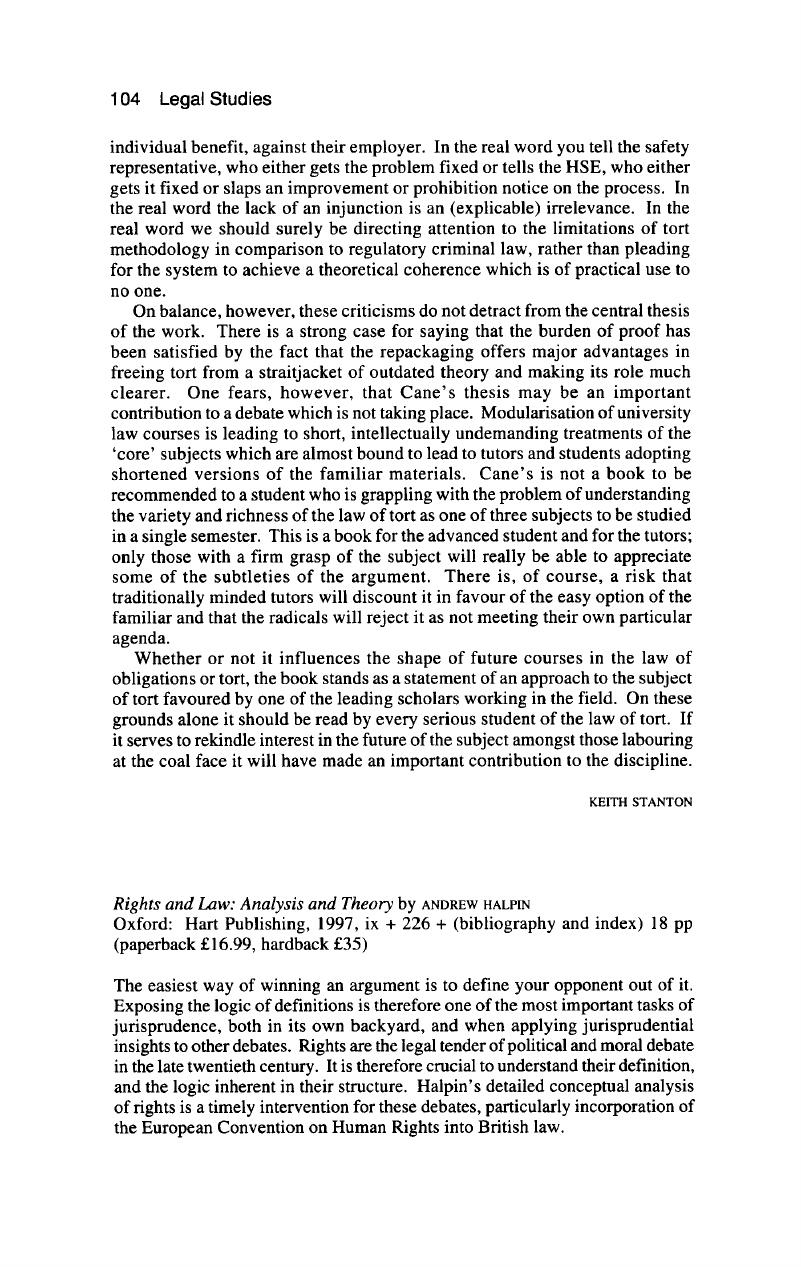No CrossRef data available.
Published online by Cambridge University Press: 02 January 2018

1. Halpin, Andrew Righrs and Law: Analysis and Theory (Oxford: Hart Publishing, 1997) (hereafter R&L) pp 8–23 Google Scholar.
2. See Hart, H L A ‘Definition and Theory in Jurisprudence’ in Essays in Jurisprudence and Philosophy (Oxford: Clarendon Press, 1983) pp 21–48 CrossRefGoogle Scholar.
3. See Finnis, John Natural Law and Natural Rights (Oxford: Clarendon Press, 1980) ch 1Google Scholar.
4. R&L pp 106, 123, 137.
5. Although see Hart above n 2 at 21-48; Finnis above n 3; Brian Bix ‘Conceptual Questions and Jurisprudence’ (1995) 1 Legal Theory 465.
6. It is not obvious how the use of “conception” at pp 106ff is consistent with the rejection of that term at p 11.
7. R&L pp 27-48.
8. Raz, Joseph and MacCormick, Neil ‘Voluntary Obligations and Normative Powers’ (1972) 46 Aristotelian Society, Supplementary Volume 59 at 81Google Scholar.
9. R&L pp 60-68.
9a. The tramp example is traditional. However, occasionally life imitates jurisprudence. Shortly before Christmas, a vagrant in France committed and confessed to a crime so as to spend midwinter in a relatively warm cell. Unfortunately the court sentenced him to precisely 12 months’ imprisonment with no parole: ‘Warm-up in the cooler backfires’ Guardian 22 December 1997.
10. R&L p 72.
11. R&L pp 81-94. 12. R&L p 86.
13. R&L p 98.
14. R&L p 106.
15. R&L pp 114-122.
16. R&L p p 1 13- 1 14.
17. R&L p 12.
18. R&L pp 127-140.
19. [1932] AC 562.
20. See Twining, William and Mien, David How to Do Things with Rules (London: Weidenfeld and Nicolson, 3rd edn, 1991) pp 181–182 Google Scholar.
21. R&L p 157.
22. R&L p 152.
23. See the analysis of Elmer's Case in Schauer, Frederick Playing by the Rules: A Philosophical Examination of Rule-Based Decision-Making in Law and in Life (Oxford: Clarendon Press, 1991) pp 200–206 Google Scholar.
24. R&L pp 123, 156.
25. R&L pp 159-165.
26. Outlined above, text accompanying n 17.
27. There are brief references to these problems on pp 172 and 173. On institutional choice, see generally Komesar, Neil K Imperfect Alternatives: Choosing Institutions in Law, Economics, and Public Policy (Chicago: University of Chicago Press, 1994)Google Scholar.
28. Eg Anthony Lester ‘English Judges as Law Makers’ [1993] PL 269 at 27 1; John Laws ‘Is the High Court the Guardian of Fundamental Constitutional Rights’ [1993] PL 59 at
29. Eg R&L pp 8,20, 21.66, 89, 100, 101, 119.
30. See the discussion of ‘false scent’ in Fowler, H W (rev Ernest Gowers) A Dictionary of Modern English Usage (Oxford: Oxford University Press, 1965) pp 187–188 Google Scholar.
31. R&L p 265, emphasis in original.